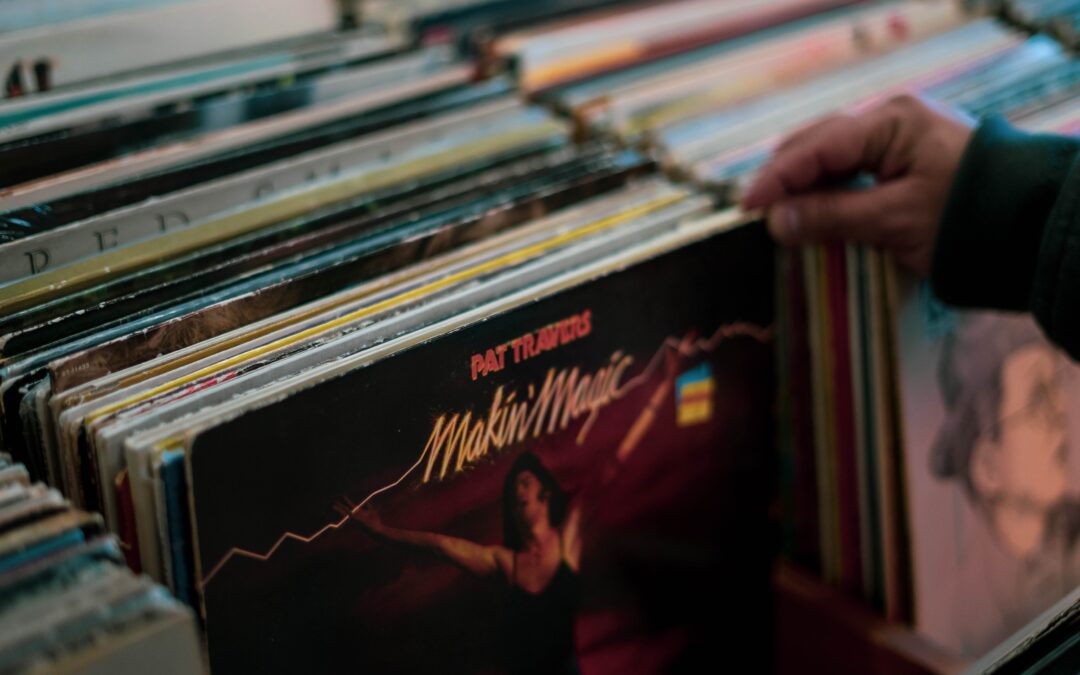Introduction
The allure of the music industry has captivated the imaginations of countless aspiring artists and music enthusiasts.
The glitz, glamour, and artistic freedom it promises are undoubtedly enticing, but beneath the surface lies a complex and ever-changing landscape known as the music business.
In this 3000-word blog post, we’ll dive deep into the multifaceted world of the music industry, offering insights and examples from various genres, including hip-hop and popular music.
By the end, you’ll have a comprehensive understanding of the inner workings of this fascinating industry.
I. The Music Industry Overview
The music industry has come a long way from the days of vinyl records and jukeboxes.
It has continually evolved, adapting to technological advancements and shifting consumer preferences. In the early days, physical sales of records, cassettes, and CDs were the primary revenue source.
However, with the advent of digital technology and the internet, the landscape changed dramatically.
Hip-hop’s rise to prominence in the late 20th century was closely tied to advancements in music production technology, such as the use of drum machines and samplers, leading to the creation of iconic beats and sounds.
Today, the music industry is characterized by streaming services like Spotify, Apple Music, and YouTube dominating the market. This shift to digital platforms has revolutionized how music is consumed and distributed.
While the industry has faced challenges like declining physical sales, it has also seen tremendous growth in terms of global reach and accessibility.
In 2020, the hip-hop genre became the most-streamed music genre in the United States, reflecting its widespread popularity among listeners.
The music business involves a complex web of stakeholders, including artists, record labels, managers, promoters, and more. Understanding their roles and interactions is crucial to comprehending the industry’s dynamics.
In the world of hip-hop, record labels like Def Jam and Roc Nation have played pivotal roles in elevating artists like Jay-Z and Kanye West to international stardom.
II. The Music Creation Process
Songwriting is the heart and soul of music creation. Artists draw inspiration from personal experiences, social issues, and creative storytelling to craft compelling lyrics and melodies.
Eminem’s “Lose Yourself” is a prime example of a hip-hop song that masterfully combines storytelling with intricate wordplay.
Recording and production involve translating an artist’s vision into a finished product. Producers and engineers work together to refine the sound, using state-of-the-art equipment and software.
The production techniques in popular music, like the use of auto-tune and electronic beats, have influenced various genres, including hip-hop.
Protecting intellectual property is crucial in the music industry. Copyright laws govern the ownership and usage of music, ensuring that creators receive fair compensation for their work.
The “Blurred Lines” lawsuit between Marvin Gaye’s estate and Robin Thicke and Pharrell Williams highlighted the importance of copyright in the industry.
III. Music Distribution and Promotion
Streaming services have revolutionized music distribution, making it easier for artists to reach global audiences. Platforms like Spotify and Apple Music allow users to access a vast library of songs at their fingertips.
Drake’s “In My Feelings” became a viral sensation largely due to its popularity on TikTok, demonstrating the power of digital platforms in promoting music.
Physical sales, though declining, are still relevant, especially for collectors and niche markets. Vinyl records and limited-edition releases continue to attract dedicated fans.
Artists like Kendrick Lamar and Kanye West have released vinyl versions of their albums, catering to fans who appreciate the tactile experience of physical media.
Successful music promotion involves a combination of traditional and digital marketing strategies. Social media, music videos, and collaborations play a significant role in building an artist’s brand.
The viral “Old Town Road” by Lil Nas X gained immense popularity through TikTok challenges and clever marketing on social media.
IV. Revenue Streams in the Music Business
While streaming services have democratized music access, they’ve also raised concerns about fair compensation for artists. Royalties are a primary income source, but the payout per stream is often minimal.
Taylor Swift’s public battle with Spotify over artist royalties highlighted the challenges artists face in the streaming era.
Live performances are a significant revenue stream for artists. Concerts, festivals, and tours offer opportunities for artists to connect with fans and generate substantial income.
Hip-hop artists like Travis Scott and Post Malone have achieved immense success through sold-out tours, showcasing the profitability of live performances.
Artists can expand their income by selling merchandise and collaborating with brands. From clothing lines to endorsements, these partnerships can be highly lucrative.
Beyoncé’s partnership with Adidas for her Ivy Park clothing line demonstrates how artists can extend their brand beyond music.
V. Music Industry Contracts and Legalities
Record contracts are complex legal agreements that dictate an artist’s relationship with a label. Understanding the terms, royalties, and rights is essential for any aspiring artist.
Prince’s battle with Warner Bros. Records over artistic control and contract terms is a notable case study in the music industry.
Licensing agreements allow music to be used in various media, including films, TV shows, and commercials. Understanding the licensing process is crucial for maximizing revenue.
The use of hip-hop tracks in movies and advertisements has contributed to the genre’s mainstream exposure and financial success.
Legal issues are common in the music industry, ranging from contract disputes to copyright infringement cases. Artists must be vigilant in protecting their rights.
The copyright infringement lawsuit against Led Zeppelin’s “Stairway to Heaven” highlighted the importance of legal clarity in music composition.

Rock sub-section at Heartland Records
VI. Building Your Music Career
Developing a unique artistic identity and brand is essential for standing out in a crowded industry. Artists must cultivate their image and authenticity.
Lady Gaga’s transformation from Stefani Joanne Angelina Germanotta to a larger-than-life pop sensation exemplifies effective artist development and branding.
Networking is critical for building relationships with industry professionals, securing collaborations, and advancing one’s career.
Hip-hop producer Dr. Dre’s collaborations with a diverse range of artists, from Eminem to Snoop Dogg, showcase the power of industry connections.
The gig economy has changed the way artists work, with freelance musicians often juggling multiple gigs simultaneously. Adaptability and financial management are crucial.
Independent hip-hop artists often rely on a combination of gigging, streaming revenue, and merchandise sales to sustain their careers.
VII. Challenges in the Music Business
Digital technology has made music more accessible but has also made it susceptible to piracy and intellectual property theft. Illegal downloads and sharing of copyrighted material continue to pose challenges to artists and the industry at large.
The rise of peer-to-peer file-sharing platforms like Napster in the early 2000s drastically impacted album sales and led to numerous legal battles.
The music industry is incredibly competitive, with countless artists vying for attention. Navigating through the noise and standing out can be a daunting task.
The proliferation of SoundCloud and YouTube has enabled an influx of aspiring artists, making it even more challenging to break through.
Technology is both a blessing and a curse for the music industry. While it offers new opportunities, it also necessitates constant adaptation to stay relevant.
The shift from physical to digital music distribution forced traditional record stores to adapt or face closure, exemplifying the impact of technological disruptions.
Music Business Trends and Future Outlook
Emerging technologies like blockchain and virtual reality are poised to disrupt the industry further, offering innovative ways to create, distribute, and experience music.
Example: Virtual reality concerts, like Travis Scott’s “Fortnite” performance, provide a glimpse into the potential of immersive music experiences.
Social media platforms continue to shape music discovery and promotion while streaming platforms evolve to offer more personalized experiences.
TikTok’s influence in propelling songs like “Savage Love” by Jawsh 685 and “Say So” by Doja Cat to chart-topping success showcases the power of social media in music.
The music industry’s future is marked by uncertainty, but key trends suggest a continued shift towards independent artists, diverse revenue streams, and fan engagement.
The rise of K-pop and its global fan base exemplifies how artists from non-Western markets can achieve international success through strategic marketing and fan engagement.
Check out: Navigating the Music Industry as an Independent Artist
IX. Conclusion
In conclusion, the music business is a dynamic and multifaceted industry that has seen significant changes over the years.
Whether you’re a hip-hop artist aiming for global stardom or a fan curious about the inner workings of the music world, understanding its complexities is crucial.
From music creation and distribution to legalities and emerging trends, this blog post has provided a comprehensive overview of the music business.
As you navigate your own musical journey, remember that the industry is not without challenges, but it’s also filled with opportunities for innovation and creativity.
Whether you’re an aspiring artist or a passionate listener, the music business offers a thrilling and ever-evolving landscape to explore and enjoy.
Embrace the changes, stay true to your art, and who knows? You might just become the next big name in the music industry.






